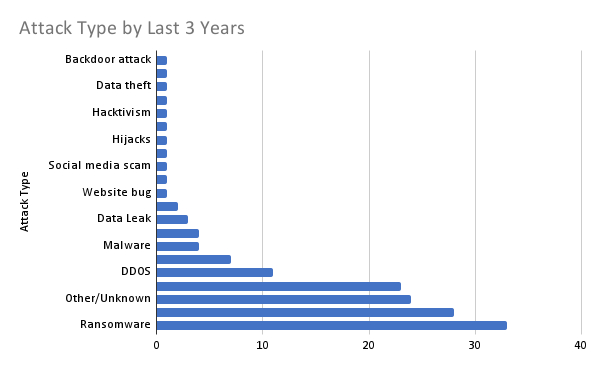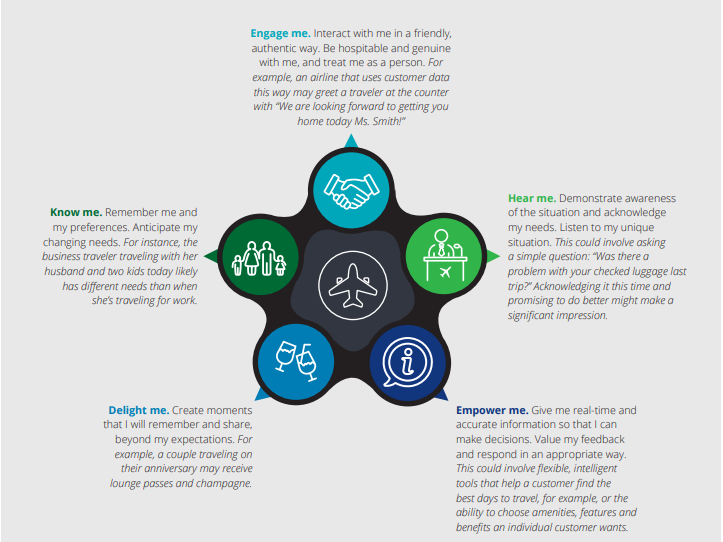One of the many sectors that should have a laser-like emphasis on customer experience is the airline industry.
According to a Deloitte study, airlines with CX as their foremost priority can see 12x return on sales than those with a relatively lower emphasis. Poor customer experience not only lead to fewer passengers and decreased profits but also underscore the critical importance of consistently delivering delightful experiences for every client’s flight.
What is Proactive CX?
Proactive CX entails anticipating the needs of consumers and resolving issues before they reach out to you. It becomes a part of a customer’s journey, end-to-end. Picture this: You book a flight, and receive following texts and emails about the next steps be it web check-in procedure and or any further change/update You are always up-to-date with proactive information delivery. This is what proactive CX looks like.
It is nothing but a form of anticipatory and pre-emptive support that enables free agents to concentrate on more complex, context-specific problems.
Reactive vs Proactive CX
Let’s take a simple example:
Consider this – you are flying in an airplane, and while booking, you were promised in-flight entertainment, but it is not in service There are currently two potential possibilities.
Scenario 1: You contact the cabin crew and let them know the problem you are facing.
Scenario 2: Before boarding, you received an email and a text message informing you that the in-flight entertainment system was broken and that a seat change or equipment replacement would be given if asked.
The first situation is an example of reactive CX, and the second situation is an example of proactive CX.
The words themselves make up the line of difference between the two.
Proactive CX refers to the diligent and forward-thinking actions that the enterprise takes before the damage has been done, as opposed to reactive CX, which refers to responding to the customer’s query after the wreckage.
Hence, the difference between these two can be understood with the initiation of the contact. Reactive CX occurs when the customer contacts the business first, and proactive CX occurs when the business contacts the client.
Challenges in CX in the Airline Industry

The airline sector was in utter chaos during the pandemic. The number of cancellations, the absence of refunds, etc., infuriated the customers. It needed a balance of high-touch and high-tech customer experience. Over time, customer expectations have also increased exponentially. But the most prominent challenges that are getting in the way of a good customer experience are:
1 . Disjointed experience
The fragmentation of the airline sector is one of the main problems for both customers and agents. The consumer data is hardly cohesive and trackable. For example, a customer raises a refund ticket or a cancellation request to an airline. Different departments are in charge of different aspects of the customer’s experience.
In addition to the numerous partners and other service providers engaged, the sales department, for instance, will manage tickets while another will create the in-flight experience, and the finance department will take care of the refund part. The outcome is a disjointed and inaccurate passenger experience.
This problem can be solved with a customer experience platform like Kapture, in which all customer-specific information can be seen on one single screen along with sub-tickets and side conversations with 3rd party vendors.
2. Lengthy response times
In the case of delayed or cancelled flight, passengers are impacted with little to no control over these circumstances. Things in customer service system become very dynamic adding to uncertainty and pressure. Consequently, meeting everyone’s needs can become challenging. This dissatisfaction is further intensified by the frustration of being unable to speak to a live person and receiving no callbacks.
3. Cybersecurity risks:
According to Eurocontrol (a pan-European, civil-military organization dedicated to supporting European aviation), 52 attacks were reported in 2020; in 2021, 48; and in 2022, 50 attacks were reported through the end of August. Thus, cyber attacks in 2022 have only just surpassed the average of 2020 and 2021.
Hence, it is important to manage customer experience on platforms that are SOC2 compliant.

4. Customer trust and loyalty
Airline industry faces a lot of challenges in meeting customer expectations which hampers in building customer loyalty and trust. A customer will most likely disengage and never book a flight if they’ve previously had a negative experience with a brand.
According to McKinsey,” There is a potential for a wave of dissatisfied customers at a time when loyalty is up for grabs”.
The airlines that have kept up their performance and satisfaction levels now have the opportunity to reassess their priorities and improve their competitiveness by giving CX more priority.
Importance of Proactive Customer Service by Airlines
Consider this-
The XM Institute’s poll of 10,000 consumers found a substantial correlation between customer satisfaction and likely to suggest an airline in terms of recommendations.
Customers who rated an airline ‘high’ for their “emotion”—the way the trip made them feel—said they were likely to recommend the business 86% of the time. As they surpass industry competitors in this area, their NPS may increase noticeably.
Customer is the focal point of every business, of any given industry. And customers have the power of influencing the entire present and future of any airline business. They have the capacity to favourably affect how customers view a specific airline and their propensity to utilize its offerings in the future.
According to a study commissioned by Amadeus, which is based on interviews with eminent academics, trade associations, and international airlines, and also includes a survey of 2,800 tourists from Australia, Brazil, China, the UK, and the US, it is revealed that delays or cancellations caused nearly one in five (18%) of all passengers surveyed to be unable to complete the purpose of a trip planned in the previous year (the percentage rises to a third in China).
Insufficient communication was also a major source of annoyance for travellers, which could later affect their allegiance to a particular airline.

Had there been sufficient information provided to the customers beforehand, which is part of providing a proactive customer experience, the majority of the customers would not have had a highly unsatisfactory experience and questioned their loyalty to that particular airline.
Understanding the customer journey in the Airline Industry
It is fundamentally important to comprehend the customer journey path before considering the delivery of proactive customer service by airlines.
Stage 1 – Pre-travel
1 . Awareness
At this point, buyers are searching for the best flight to meet their requirements. They discover about the flights from a variety of sources, including the airline’s website, social media platforms, and special offers and discounts.
The kind of assistance that they might require in this situation is the simplicity of discovering the pertinent flights, including appropriate promotion and website navigation. Both online and offline forums are used during this stage.
2. Engagement And Acquisition
Customers interact with airlines at this point. Before purchasing the ticket, the client gains a sense of the airline, increasing the flow of passengers to the airline. Here, the ticket volume will increase across all channels, primarily on social media, website, and live chat to clear their doubts regarding the flights.
Stage 2 – During Travel
This is the stage when the airline customer really experiences the flight they paid for. The customer will be given the flight details to help them get ready for the trip as soon as they receive their boarding pass through email. The customer may receive other materials like gate information and travel guides by email, social media, or regular mail. Since it is unavoidable for things to go wrong during a flight, it is crucial to provide proactive customer service by airlines.
Stage 3 – Post Travel
It is fundamental to stay in touch with the passenger both before and after the journey to provide proactive customer service by airlines. After the customer lands, they might require assistance with the baggage claim, the exit gates, or even their cab if they reserved it through the airline.
The customer journey here is not really different from any other product. But the product here has a shelf life, it is perishable. Hence proactive support is extremely important to retain customers.
Ways to Deliver Proactive CX in the Airline Industry

1 . Omnichannel Customer Support
An airline contact centre that is skilled and reliable can be easily reached by customers through various channels such as phone, web chat, SMS, or an app, providing them with a means to prevent a great deal of frustration. Keep a regular presence on social media sites and be prompt in your responses to queries and offers of assistance.
2. Leverage AI
AI can help businesses proactively anticipate customer needs, in short, help provide proactive customer service by airlines. AI can detect patterns and trends that might help businesses predict demands by analyzing data from many sources, such as social media, customer service interactions, and sales data.
It is possible to intelligently decide how many passengers should be permitted to board a flight using data relating to passenger counts and which airline staff are on standby for each trip. For example, based on real-time incoming data, AI uses predictive analytics to determine whether it would be prudent to permit boarding. This is just a part of it.
Other examples include flight information, such as weather trends, flight delays, and maintenance problems, that can be used to forecast whether a flight will be on time or not.
3. Proper communication
Airlines may inform passengers of things like delays, ticket modifications, weather forecasts, security wait times, luggage terminal locations, and more by text message, email, etc.
Some airline management systems include features like omnichannel assistance, which combines and pulls queries from various channels into a single platform.
In the airline sector, effective communication and information delivery to customers is crucial for providing good customer service.
4. Feedback Collection
The easiest way to determine your position in the market is to ask your customers. Automated surveys make it possible for businesses to gather and analyze consumer input in real time, allowing them to modify their goods and services accordingly.
Airlines can use this understanding to determine which aspects of their customer service require the greatest attention and develop a plan for doing so using data-driven decision-making.
5. Measure your airlines’ CX efforts
It is crucial to measure your efforts after investing a lot of effort into delivering proactive customer service by airlines. The most important indicators you need to pay attention to are-
1 . CSAT- Like most businesses, survey findings on customer satisfaction are a crucial direct indicator of good (or bad) customer experiences in the airline sector.
2. NPS- How many consumers are satisfied with your customer service and would be delighted to refer your airline to their friends and family is determined by your NPS, or net promoter score.
3. AHT- It is the length of time an agent spends working on a certain query. Your team will work more efficiently the less time it takes.
,
,
,
,
,
,
,
,
,
,
,
,
,









